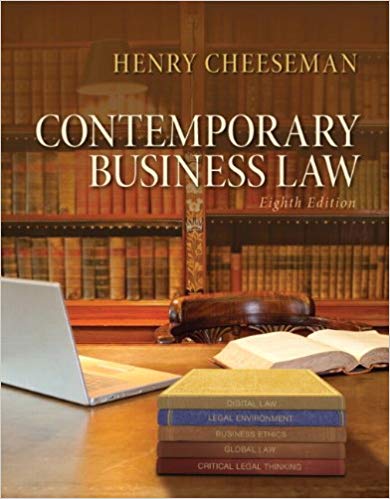The risk of harm accompanying the bats use extends beyond the player who holds the bat in
Question:
“The risk of harm accompanying the bat’s use extends beyond the player who holds the bat in his or her hands.” —Selley, Justice
Facts: While pitching in an American Legion baseball game, 18-year-old Brandon Patch was struck in the head by a batted ball hit by a batter using a model CB-13 aluminum bat manufactured by Hillerich & Bradsby Company (H&B). Brandon died from his injuries. A baseball hit by an aluminum bat travels at a higher velocity than a ball hit by a traditional wooden baseball bat, thus increasing an infielder’s required reaction time. Brandon’s parents, individually and as representatives of Brandon’s estate, sued H&B for strict liability, asserting that H&B failed to warn Brandon of the alleged defect in the aluminum bat, that is, the increased speed of a ball hit by H&B’s bat. In defense, H&B first alleged that there was no defect of failure to warn, and second it did not have a duty to warn a nonuser of the bat. The jury found failure to warn and awarded the plaintiffs $850,000 against H&B. H&B appealed.
Issue: Did H&B fail to warn Brandon of the increased risk of injury caused by its aluminum bat?
Language of the Court: The bat is an indispensable part of the game. The risk of harm accompanying the bat’s use extends beyond the player who holds the bat in his or her hands. A warning of the bat’s risks to only the batter standing at the plate inadequately communicates the potential risk of harm posed by the bat’s increased exit speed. H&B is subject to liability to all players in the game, including Brandon, for the physical harm caused by its bat’s increased exit speed.
Decision: The Supreme Court of Montana upheld the jury’s finding of failure to warn by H&B and affirmed the award of $850,000 damages.
Ethics Questions: Do you think that H&B should have been found liable in this case? Do baseball leagues and teams owe an ethical duty to ban the use of aluminum bats?
Step by Step Answer:






